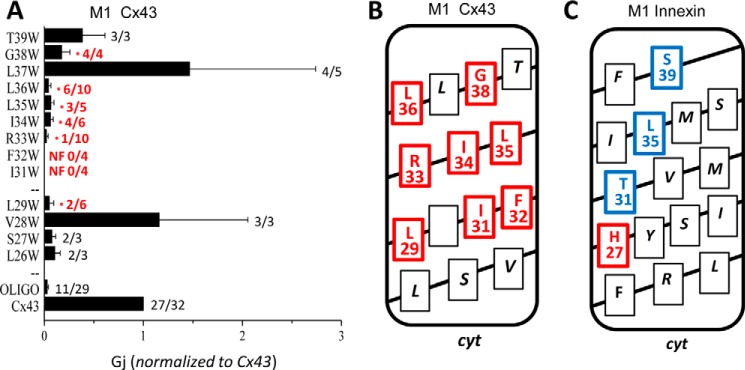FIGURE 7.

Tryptophan scanning reveals similarities and differences in TM domain packing of connexins and innexins. A, tryptophan scan of Cx43 TM1. Histogram shows mean junctional conductance recorded for tryptophan substitution mutants expressed in Xenopus oocytes. Mutants were paired heterotypically with wild type Cx32, and conductance was normalized to that of wild type Cx43 pairs of the same batch on the same day. A baseline level of conductance is noted in the Cx43/oligonucleotide control because Cx43 pairs with XeCx38 minimally after knockdown with the antisense oligonucleotide. This prevented discrimination between substitutions that abolished and reduced function. The numbers beside each bar represent the number with measurable conductance versus the number tested (e.g. number of functional/number of tested). * = statistically reduced compared with wtCx43 at p ≤ 0.05 as determined Student's t test. B, helical net plot highlighting location of sites in Cx43 where tryptophan substitution abolished (red) or significantly reduced (blue) conductance. C, for comparison, tryptophan scanning results for TM1 of an innexin (ShakBL) are shown in helical net format (redrawn from Ref. 20). TM1 of the innexins is loosely packed compared with Cx32 and Cx43.
